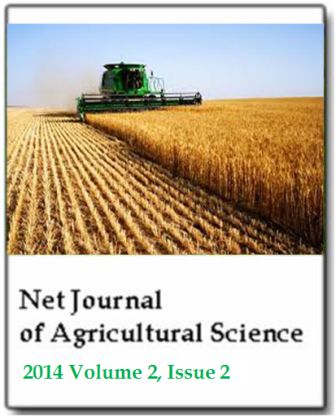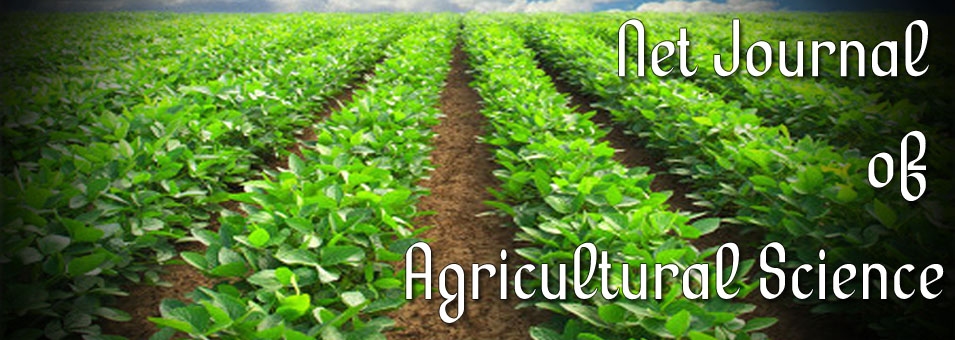Characterization and classification of soils in steep sided hills and sharp-crested ridges of Akwa Ibom State, Nigeria
Ukut A. N., Akpan U. S. and Udoh B. T.Net Journal of Agricultural Science
Published: April 2 2014
Volume 2, Issue 2
Pages 50-57
Abstract
Characterization and classification of soils in steep sided hills and sharp-crested ridges of Akwa Ibom State were investigated. The aim was to have baseline information that will assist farmers and other land users in decision making. With the help of global positioning system (GPS) and soil augering, two soil identification units based on the drainage pattern and elevation were identified in the study area. They were poorly drained soils and the well-drained soils. In each soil identification unit, three representative soil profile pits were dug. A total of 6 profile pits were dug in the study area. The pits were described in accordance with FAO (1990) guidelines for soil profile description. Soil samples were collected from each genetic horizon for laboratory analysis. The results revealed that clay is the dominant texture in the poorly drained soils, whereas loamy sand dominates the soil surface of well- drained soils and sandy clay loam dominates the subsoil. Soil pH varied from strongly acid to moderately acid (pH 5.1-5.8) in the poorly drained soils and very strongly acid to moderate acid (4.9 to 5.6) in the well-drained soils. The soils of the study area were non-saline and within the acceptable level for general crop growth. Organic carbon varied from low to very high (0.7 to 2.7%) in the study area. Total nitrogen of the poorly drained soils varied from moderately high to very high (0.2 to 0.8%) while well-drained soils varied from low to high (0.08 to 0.3%). Available P varied from low to moderate (5.8 to 15.0 mgkg-1) in the study area. Exchangeable bases (Ca, Mg, Na and K) were generally low (Ca: 1.5 to 3.2 cmol/kg, Mg: 0.3 to 2.6 cmol/kg, K: 0.06 to 0.4 cmol/kg and Na: 0.03 to 0.2 cmol/kg) in the study area. CEC varied from very low to low (5.0 to 9.5 cmol/kg) in the poorly drained soils and low to moderate (10.0 to 12.0 cmol/kg) in the well-drained soils. Base saturation varied from low to high (24.0 to 81.0%) in the poorly drained soils and low to moderate (23.0 to 41.0%) in the well-drained soils of the study area. Poorly drained soils are classified as Typic Epiaquepts (USDA) or Cambisols (FAO/WRB) while well-drained soils are classified as Typic Hapludults (USDA) or Haplic Acrisols (FAO/WRB).
Keywords: Soil classification, soil type, soil characterization.
Full Text PDF
